7 Simple Ways to Relieve Muscle Soreness
Check out my client Alex’s transformation where he gained a whole lot of muscle by doing the right things after his workouts!

These are 7 easy and effective ways to reduce and eliminate muscle soreness fast. Decrease delayed onset muscle soreness (DOMS) and relieve that muscle pain without spending all day stretching.
Whether you have shoulder pain, leg pain, or back pain, if you’re feeling sore, this post will help.
When you feel sore after a workout, it’s easy to assume that your muscles will recover and grow back stronger and more defined than before. In fact, many people believe that the sorer they are, the more effective their workout must have been.
However, the truth is that soreness is actually not a good indicator of muscle growth. In fact, research shows that there is no relation between delayed onset muscle soreness and building muscle. (1)
Research also indicates that muscle damage, which is what causes the soreness, is actually not even necessarily required to build muscle and the evidence shows that muscle damage doesn’t correlate with hypertrophy or muscle growth. (2)
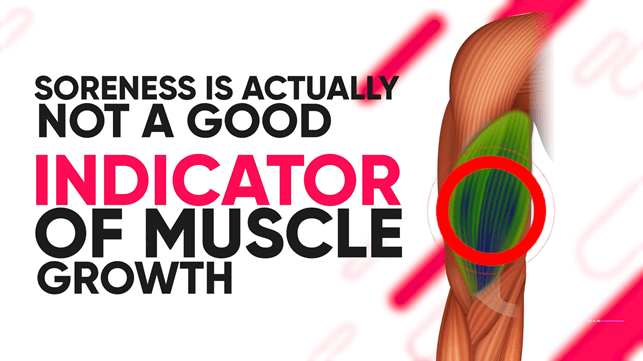
On top of that, excessive muscle damage might even put new muscle growth on hold (3) because it will prevent you from being able to hit the gym again sooner rather than later. And since total workout volume is an important factor for muscle growth, being sore for too long and underperforming during certain workouts can actually have detrimental effects on building muscle.
This doesn’t mean that you shouldn’t train hard, and if you’re never even a little sore, you’re probably not training hard enough. But there are 7 simple things that you can do to accelerate your recovery and reduce soreness so that you can push yourself without overdoing it.
#1 Don’t switch your exercises and your workout program too often
This one may surprise you, but make sure you don’t switch your exercises and your workout program too often. This is because delayed onset muscle soreness is mostly felt after performing exercises that you’re not yet accustomed to.
For example, you can squat a ton and never get sore, but as soon as you switch it up for Bulgarian split squats, even if you go much lighter, you’ll probably still get sore during that initial workout session. After that initial session, an adaptation process known as the “repeated bout effect” greatly reduces muscle soreness when you do the exercise again, even if it is months later. (4)
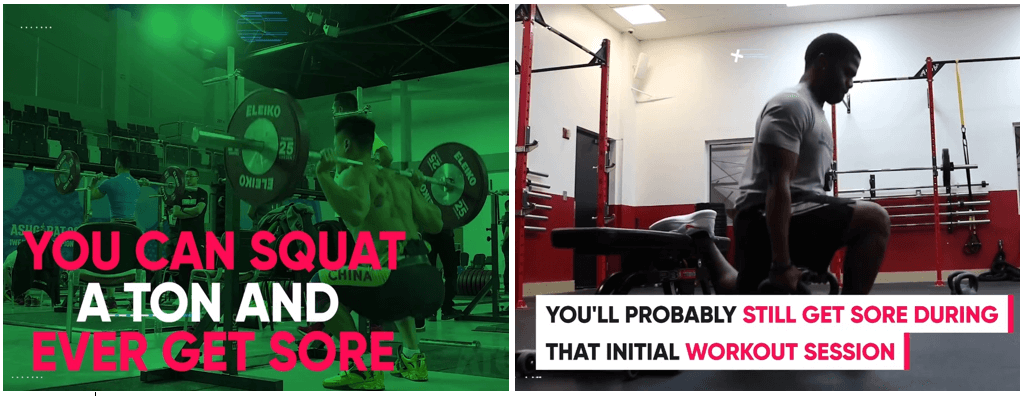
You’ve probably experienced it yourself where you feel really sore after doing an exercise for the first time, then the second time you’re already much less sore. And after a while, you might not even experience any kind of soreness at all.
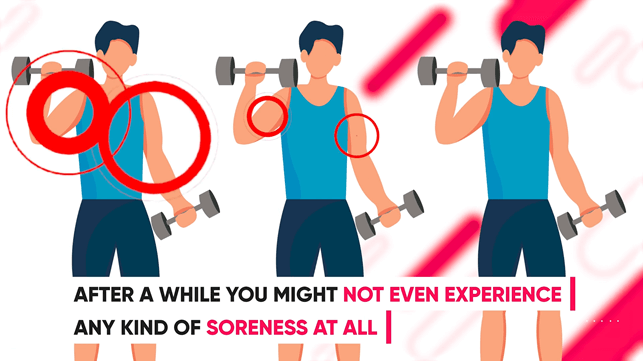
Many people switch up their workouts all the time to chase that muscle soreness, but what they don’t realize is that they’re chasing neurological adaptations rather than muscular adaptations.
Of course, you don’t always want to do the same workout over and over again and you should change it up every now and then because there’s such a large variety of great exercises that can help you get stronger. I like to change up my workouts every 6 to 8 weeks, but you should at minimum stick to the same workout for 4 weeks to make progress and begin mastering the exercises.
#2 Take in enough Omega-3 Fatty Acids
Now regardless of your workout schedule, your diet will also decide how quickly you recover from a workout. So you should definitely try to take in enough omega-3 Fatty Acids to help decrease muscle and joint soreness.

A study published in the Journal of Sports Science and Medicine tested whether omega-3 supplements could reduce inflammation and soreness. (5) To test this, participants were required to restrict omega 3 intake for 14 days. Then they would perform a workout with bicep curls.
After that, they spent 7 days supplementing with 3,000 milligrams of omega-3 per day and then they performed bicep curls again. The researchers measured the difference in inflammation, muscle soreness ratings, swelling, and temperature.

Even though arm soreness increased both times in response to the bicep curls, participants felt 15% less soreness during the omega-3 supplementation portion of the experiment. (6)
The researchers believed that omega 3 helped reduce soreness thanks to it’s ability to decrease pro-inflammatory factors like IL-6 and TNF-alpha. The bottom line – to take advantage of this do your best to eat some fatty fish. Two servings per week of a fish like salmon is a great guideline.
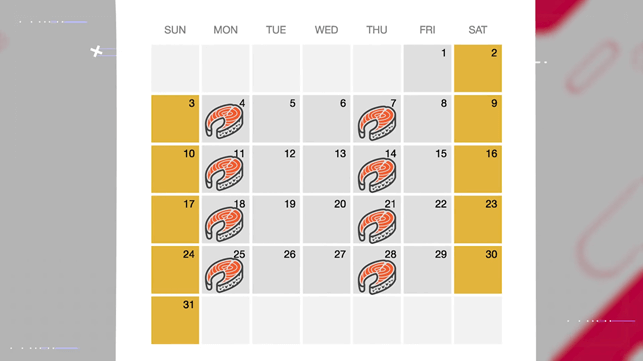
You do want to make sure that you take in some form of omega 3 because most people nowadays consume way too much omega 6, and you want to maintain a good balance between your omega 3 and omega 6 ratio.
#3 Perform Contrast Therapy
Another simple way to reduce soreness, which happens to be one of my favorite things to do after any workout, is something known as contrast therapy. Essentially you heat up your entire body, or just one of your body parts, and then you immediately reverse this and cool it down. You then repeat this process a couple times.

Researchers compared this form of contrast therapy to things like cold water immersion, hot water immersion, passive recovery, stretching, and active recovery. They found that contrast therapy led to better improvements in the areas of muscle soreness as well as post recovery strength levels than every other recovery method. (7) Impressively, contrast therapy was also able to reduce muscle inflammation, improve mobility, and enhance muscle range of motion significantly.
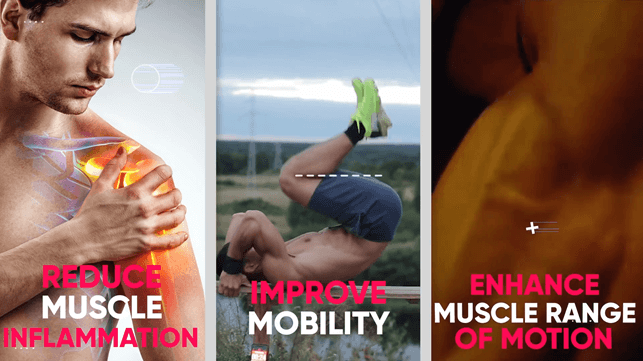
Now the easiest way to do this is by switching between a very cold and hot shower. You can switch back and forth, doing a minute of each for a total of ten minutes. But like I mentioned in another article, my personal favorite way to do this is by using a sauna in combination with an ice plunge.
With this method you would increase your body temperature in a sauna for at least a few minutes and then, once you’re really warmed up, you would jump into the ice plunge, which is basically freezing cold water.
Of course, gyms usually don’t have access to an ice plunge but you can do something similar by using the sauna at your gym and then immediately taking a cold shower for at least a minute afterwards and then doing that back and forth for a few rounds.
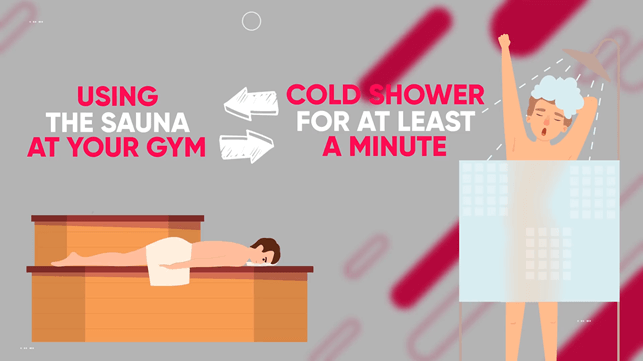
If you really want to try an ice plunge, which I highly recommend as it feels amazing, you can find one in most traditional Russian and Korean bath houses.
#4 Drink Coffee before your Workout
The next step you can take to reduce soreness is to drink coffee before your workout. Studies show that consuming caffeine before a workout can reduce subsequent muscle soreness and fatigue.
For example, one study measured the perceived levels of soreness in men that took caffeine one hour before a workout where they performed bicep curls. (8) The results showed that consuming caffeine ended up reducing muscle soreness in the biceps when compared to a placebo. The researchers concluded that the reduction in soreness could allow someone to “increase the number of training sessions in a given time period.” (9)

In another study published in the Journal of Pain, they found similar effects where having caffeine before a workout helped reduce muscle soreness by a whopping 48%. (10)
You might be wondering how and why caffeine has the ability to reduce soreness? Well, one reason is that caffeine acts as an antioxidant in the body, and antioxidants assists with recovery. Caffeine also reduces pain perception, which means your impression of the muscle damage becomes less intense. This is why many times caffeine is found in over-the-counter pain medications.
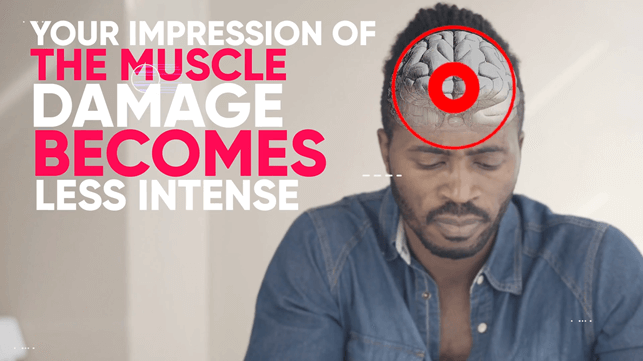
It is important to note that the studies showed an effect from taking the caffeine before a workout. It’s not clear whether that same effect applies when taken post-workout. Also if you drink caffeine too often, you’ll build up a tolerance and reduce the effects. So you might want to limit caffeine intake to only before your workout, especially because having it later on in the day can affect your sleep schedule.
#5 Perform Foam Rolling
The evidence on foam rolling is not yet conclusive. Yet, there are some studies and plenty of anecdotal evidence supporting that foam rolling can help reduce muscle soreness.
For example, in a small study, men were divided into two groups, and one of these groups would foam roll for 20 minutes immediately after their workout. Then they would foam roll again once a day for the next two days. Meanwhile the other group didn’t foam roll at all (7).
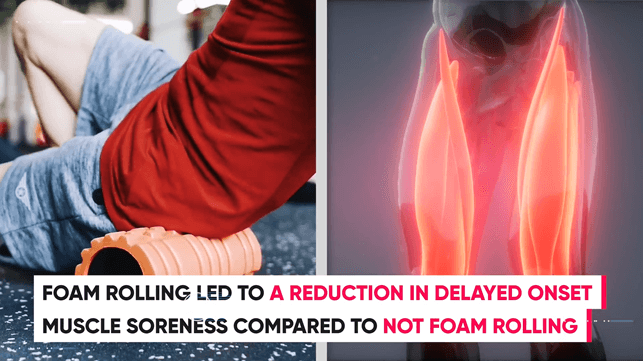
And they found that foam rolling led to a reduction in delayed-onset muscle soreness compared to not foam rolling. Plus, the men that foam rolled after their workout also experienced better athletic performance afterwards than the men that didn’t. (11)
Another small study, also examined the effects of foam rolling on soreness and performance post-workout. (12) They discovered that those that foam rolled experienced a reduction in muscle soreness and increased muscle activation, increased vertical jump height, and increased flexibility.
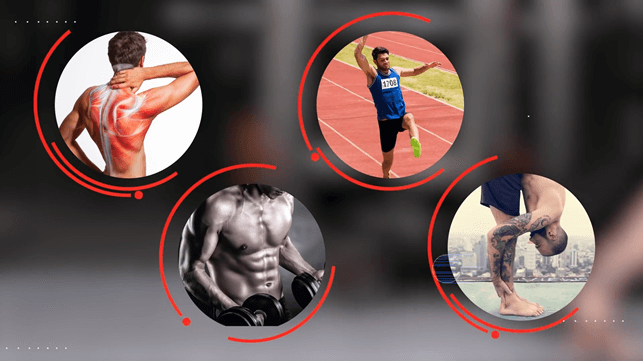
Keep in mind, like I said at first, both studies were small. So, we can’t make a definite conclusion on whether foam rolling post-workout is beneficial for everyone. But it does seem to help stimulate blood flow, which can help your body deliver nutrients to your broken down muscle fibers.
#6 Stay Active
Another great way to reduce soreness is, ironically, to stay active. It may feel very counterintuitive to take a brisk walk after a heavy leg day, but it really can help quite a bit.

For example, in a study revolving around eccentric training exercises, which is well-documented to produce much more muscle damage than regular concentric training, all participants performed the same eccentric workout but after the workout they were divided into three groups.
One did 20 minutes of moderate intensity cycling. The other did 20 minutes of low intensity cycling, and finally the last group simply sat down and rested.

The results showed that the participants that performed low-to-moderate-intensity cycling immediately following their strength workout, experienced a reduction in muscle pain and they also improved their strength. (13)
#7 Get enough High-Quality Sleep
Last but not least, getting enough high-quality sleep every night is actually one of the best things you can do to reduce soreness. If you don’t get enough sleep, not only will you experience more muscle soreness, but that feeling of soreness will linger around for longer. (14)

There are several studies on sleep deprivation, but one in particular had rugby players play games, and then either get 8 hours of sleep or they would sleep deprive themselves and get no sleep. Afterwards, the researchers assessed how sore the athletes felt and how they responded physically in general.
Sure enough, the sleep deprived group reported feeling more physically fatigued, they also had slower cognitive function, decreased lower-body strength, and a higher rating of muscle soreness. (15)
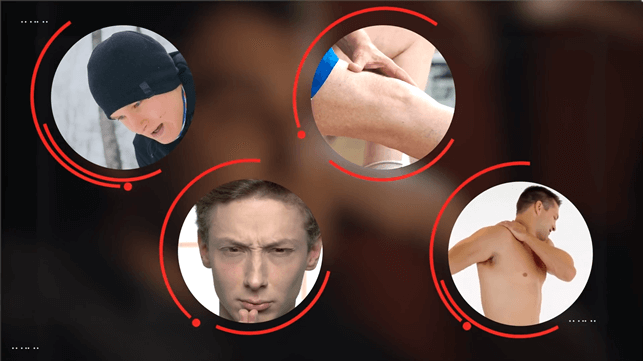
So to help prevent muscle soreness make sure that you’re getting enough high-quality sleep. The exact amount required does vary from person to person but between 7 and 9 hours does the trick for most people.
Also, keep in mind that you can take steps to increase the quality of your sleep. For example, you should maintain a consistent sleeping schedule. Don’t go to sleep one night at 10 pm and the next at 2am.
Another very helpful way to get better quality sleep is to make your bedroom pitch-black. You can also consider potentially supplementing with magnesium and melatonin if you struggle getting to sleep and staying asleep.
Concluding notes
So that about wraps it up, I hope this article helped you out. Make sure you try these simple but effective tips to help reduce muscle soreness, and if you feel that your workouts aren’t helping you make progress, you can try one of my programs here on my website.
Also if you’re looking for a done for you system that helps you drop 20 lbs off the scale or 5% of your body fat in the next 6 weeks then try my 6 week challenge. The program comes with a customizable diet plan that will be based around you and your preferences and it’s designed to maximize your metabolism as you drop fat.
We can create a plan based on what works better for you, whether that’s carb cycling, paleo, intermittent fasting, the one meal a day diet, vegan or vegetarian. You’ll also get a 42-day workout plan with a full video exercise library and a recipe book that’ll go hand-in-hand with your diet. You’ll also have an accountability coach to guide you through the entire process. To find out more make sure to click the link below.
References
- Research shows that there is no relation between delayed onset muscle soreness (DOMS) and muscle growth.
- Research also shows that muscle damage – the phenomenon that causes soreness – is not required for muscle growth and that muscle damage does not correlate with hypertrophy.
https://pubmed.ncbi.nlm.nih.gov/21270317/
https://pubmed.ncbi.nlm.nih.gov/27219125/
- Excessive levels of muscle damage might even put new muscle growth on hold because it can be a sign that you have taken your workouts too far, as a study published in the Journal of Applied Physiology indicates.
https://journals.physiology.org/doi/full/10.1152/japplphysiol.00397.2018
- After that initial session (of a brand new workout), adaptations called the “repeated bout effect” greatly reduce DOMS if you do the exercise again, even if it is months later.
https://search.proquest.com/openview/615cbf26cce637b959ccc819d6ee5608/1?pq-origsite=gscholar
https://pubmed.ncbi.nlm.nih.gov/23922170/
- A 2011 study published in the Journal of Sports Science and Medicine tested whether omega-3 supplements can reduce inflammation and soreness. Results were promising.
https://pubmed.ncbi.nlm.nih.gov/24150614/
- “Arm soreness increased (p < 0.0001) in response to eccentric exercise; the magnitude of increase in soreness was 15% less in the omega-3 trial (p = 0.004).”
https://pubmed.ncbi.nlm.nih.gov/24150614/
- One small study including eight physically active men compared foam rolling for 20 minutes immediately post-workout as well as 24 and 48 hours after exercising compared to exercising without foam rolling.
https://www.ncbi.nlm.nih.gov/pmc/articles/PMC4299735/
- A study Hurley et al., measured perceived soreness in males consuming caffeine one hour before a workout consisting of bicep curl movements.
https://pubmed.ncbi.nlm.nih.gov/24164961/
- “This decreased perception of soreness in the days after a strenuous resistance training workout may allow individuals to increase the number of training sessions in a given time period.”
https://pubmed.ncbi.nlm.nih.gov/24164961/
- A study published in the Journal of Pain found that consuming caffeine pre-workout reduced delayed onset muscle soreness by 48%.
http://www.jpain.org/article/S1526-5900(06)01023-6/abstract
- “Foam rolling effectively reduced DOMS and associated decrements in most dynamic performance measures.”
https://www.ncbi.nlm.nih.gov/pmc/articles/PMC4299735/
- Another small study, which was published in the journal Medicine & Science in Sports & Exercise, also examined the effects of foam rolling on DOMS and neuromuscular performance post-workout.
https://pubmed.ncbi.nlm.nih.gov/24343353/
- A 2012 study published in the Journal of Strength and Conditioning Research looked at how staying active impacts muscle soreness and strength. Finding favorable results.
https://pubmed.ncbi.nlm.nih.gov/22739325/
- A 2013 study published in the International Journal of Sports Physiology and Performance shows that Sleep is crucial for recovering from workouts, and not getting enough of it might cause you to experience more DOMS. It can also make you stay sore for longer.
https://pubmed.ncbi.nlm.nih.gov/23412713/
- “Examine[d] the effects of overnight sleep deprivation on recovery after competitive rugby league matches.”
My passion for fitness began when I was 14 years old. I naturally fell in love with training and haven’t stopped since. At 18 years I acquired my first personal training certification from ACE after which I opened my first of 3 transformation studios in 2011. I love to share my knowledge through personal training, my online courses, and youtube channel now with over 3,000,000 subscribers! I can happily say that we've helped over 15,000 people get in great shape over the years. I'm always here for my customers so if you need help don't hesitate to send your questions to support@gravitychallenges.com

